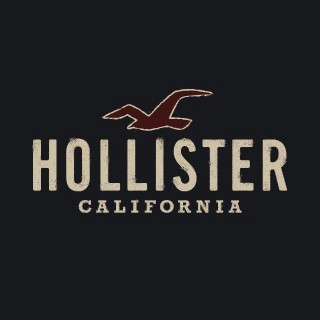“The History of Hollister”

Fifteen years ago, the word “Hollister” meant little to anyone. Now it’s hard to walk around any city, from Melbourne to Montreal to Mumbai, without seeing it stitched on someone’s shirt or hoodie. Abercrombie & Fitch, which launched Hollister in 2000, has done an extraordinary job with brand penetration: in 2013, there were five hundred and eighty-seven Hollister stores around the world, and the brand netted more than two billion dollars in sales.
The clothes themselves rarely depart from the realm of sweatshirts and sweatpants — they’re eerily similar to the comfort-wear you can buy at Target or Walmart. But a Hanes hoodie at Target is thirteen dollars, while a Hollister hoodie is $44.95. This implies that “Hollister” itself means something and is worth something.
For years, employees of Hollister stores, during orientation, were given the story, and it goes something like this: John M. Hollister was born at the end of the nineteenth century and spent his summers in Maine as a youth. He was an adventurous boy who loved to swim in the clear and cold waters there. He graduated from Yale in 1915 and, eschewing the cushy Manhattan life suggested for him, set sail for the Dutch East Indies, where he purchased a rubber plantation in 1917. He fell in love with a woman named Meta and bought a fifty-foot schooner. He and Meta sailed around the South Pacific, treasuring “the works of the artisans that lived there,” and eventually settled in Los Angeles, in 1919. They had a child, John, Jr., and opened a shop in Laguna Beach that sold goods from the South Pacific — furniture, jewelry, linens, and artifacts. When John, Jr., came of age and took over the business, he included surf clothing and gear. (He was an exceptional surfer himself.) His surf shop, which bore his name, grew in popularity until it became a globally recognized brand. The Hollister story is one of “passion, youth and love of the sea,” evoking “the harmony of romance, beauty, adventure.”
None of this is true. Most of Abercrombie & Fitch’s brands — including the now defunct Gilly Hicks and Ruehl No. 925 — have had fictional backstories, conceived by Mike Jeffries, the company’s former C.E.O. Abercrombie & Fitch told the Los Angeles Times that the company pulled the name Hollister out of thin air, so any connection between the brand and the town is coincidental. Even so, the company’s relationship with Hollister, California, population thirty-six thousand, has not exactly been one of benevolent indifference.
I am consistently fascinated with the lengths American brands will go to infuse their hoodies and pre-distressed jeans with narrative power. Like, what 13-year-old blowing their allowance at the mall cares about the founder of a (formerly) trendy clothing company? Don’t teens just wear what the cooler teens are wearing, and don’t the cool teens just wear whatever is most expensive?
But, I mean, I guess #thebrands should be allowed to do what we all do: turn personal histories into entertaining anecdotes for public enjoyment. With that in mind, I really liked Dave Egger’s essay in The New Yorker about visiting Hollister, California, a town that has a fraught relationship with Hollister, the brand, and was founded by Dave Egger’s great-great-great-grandfather.